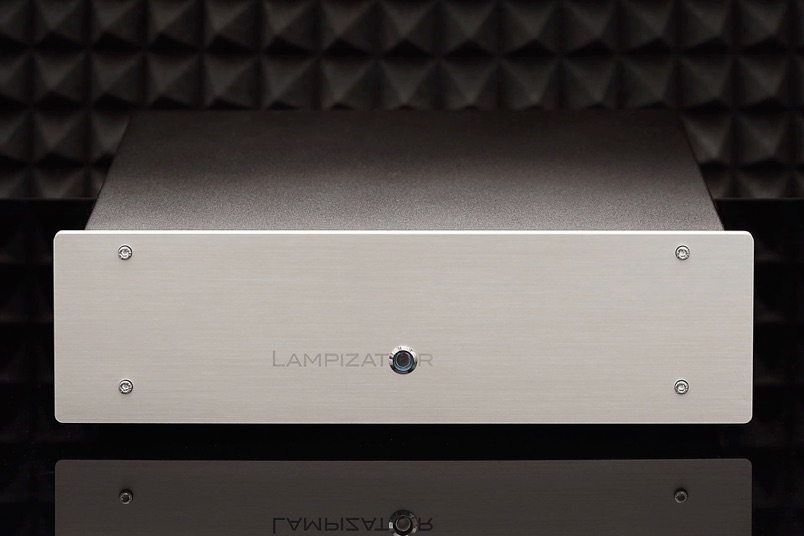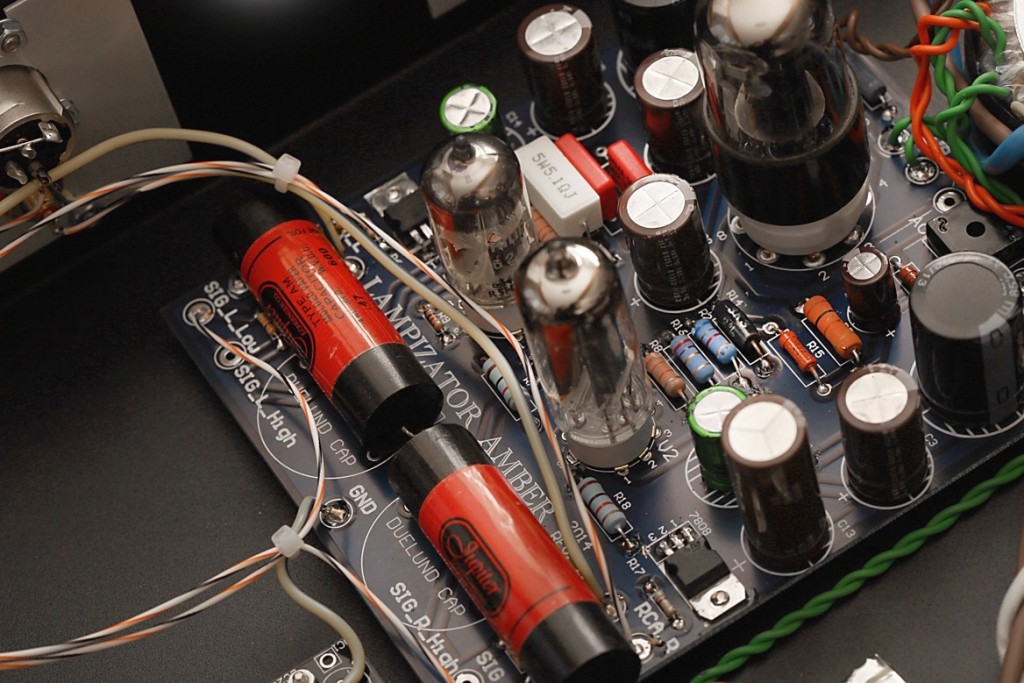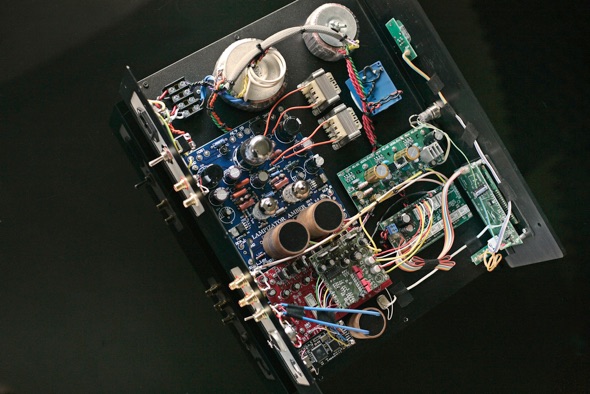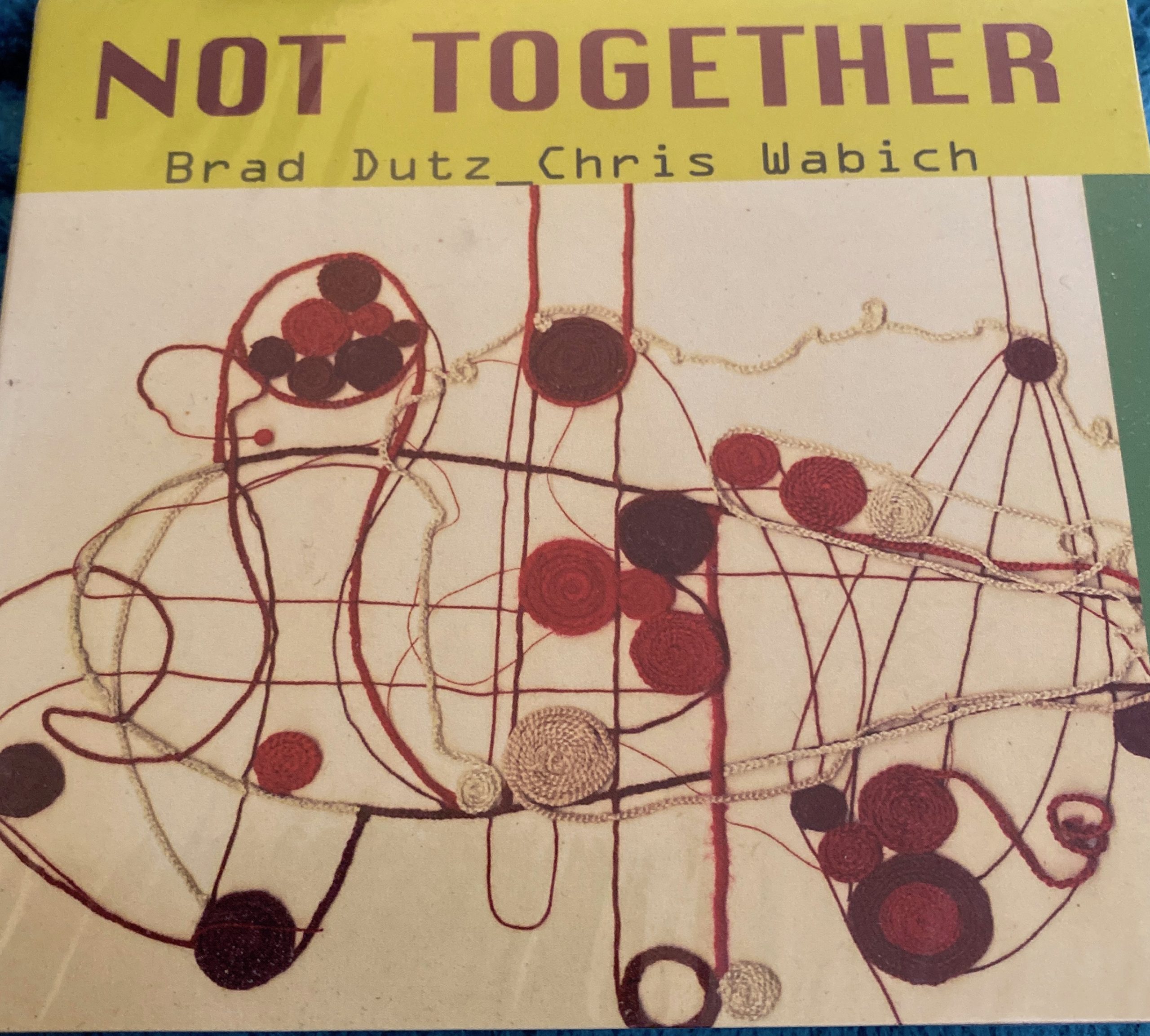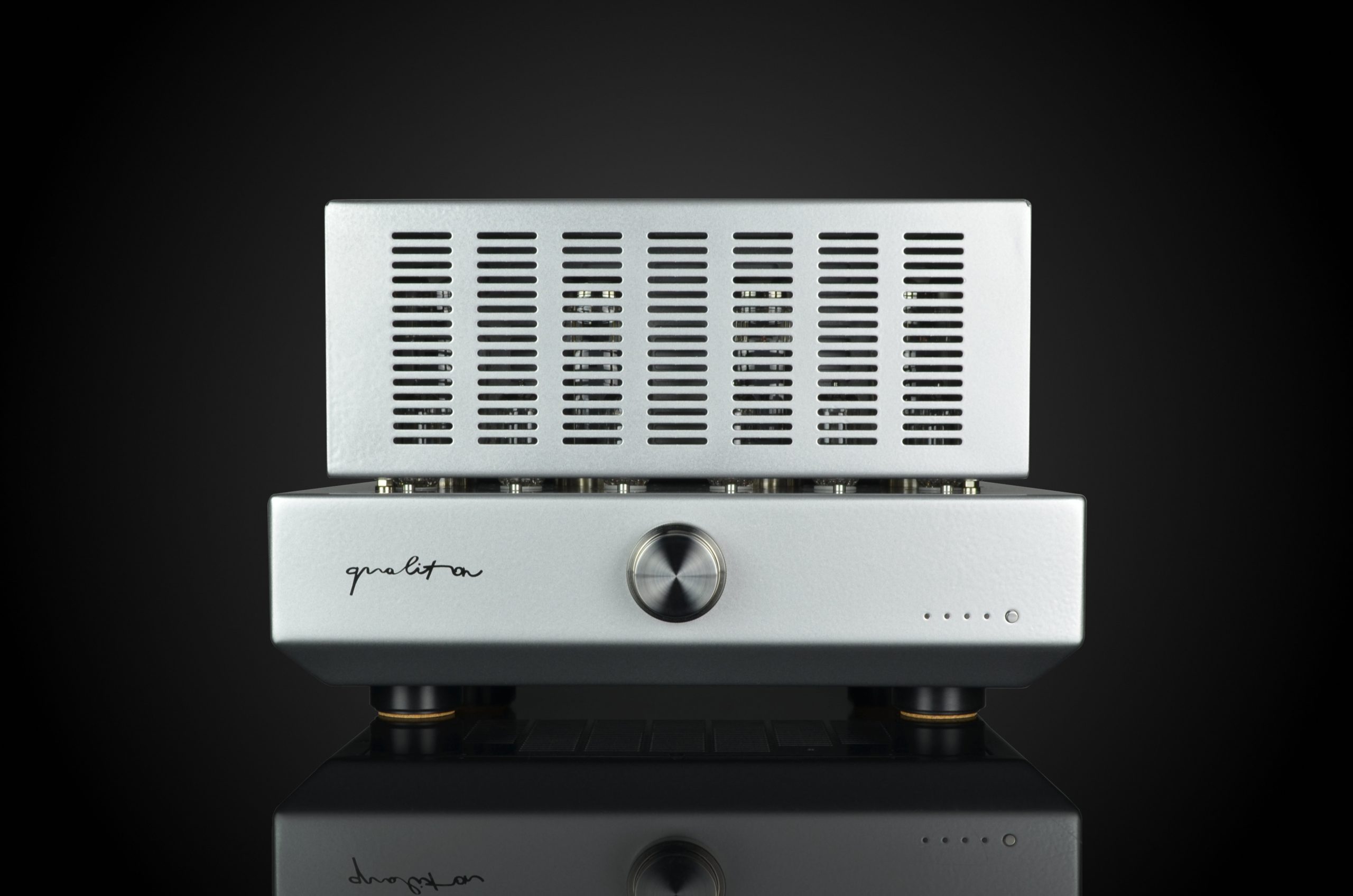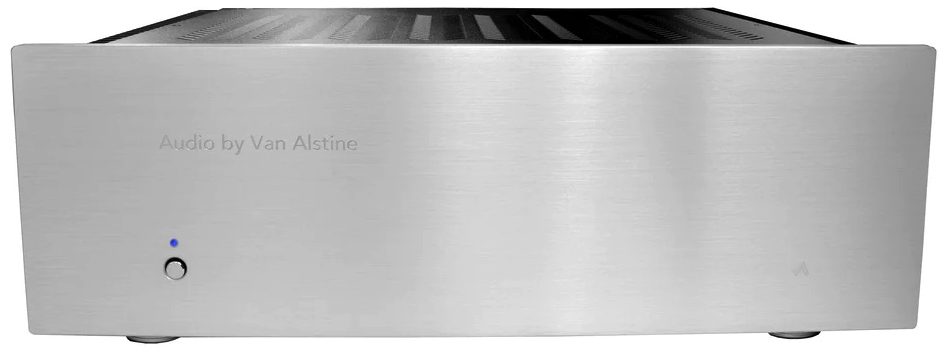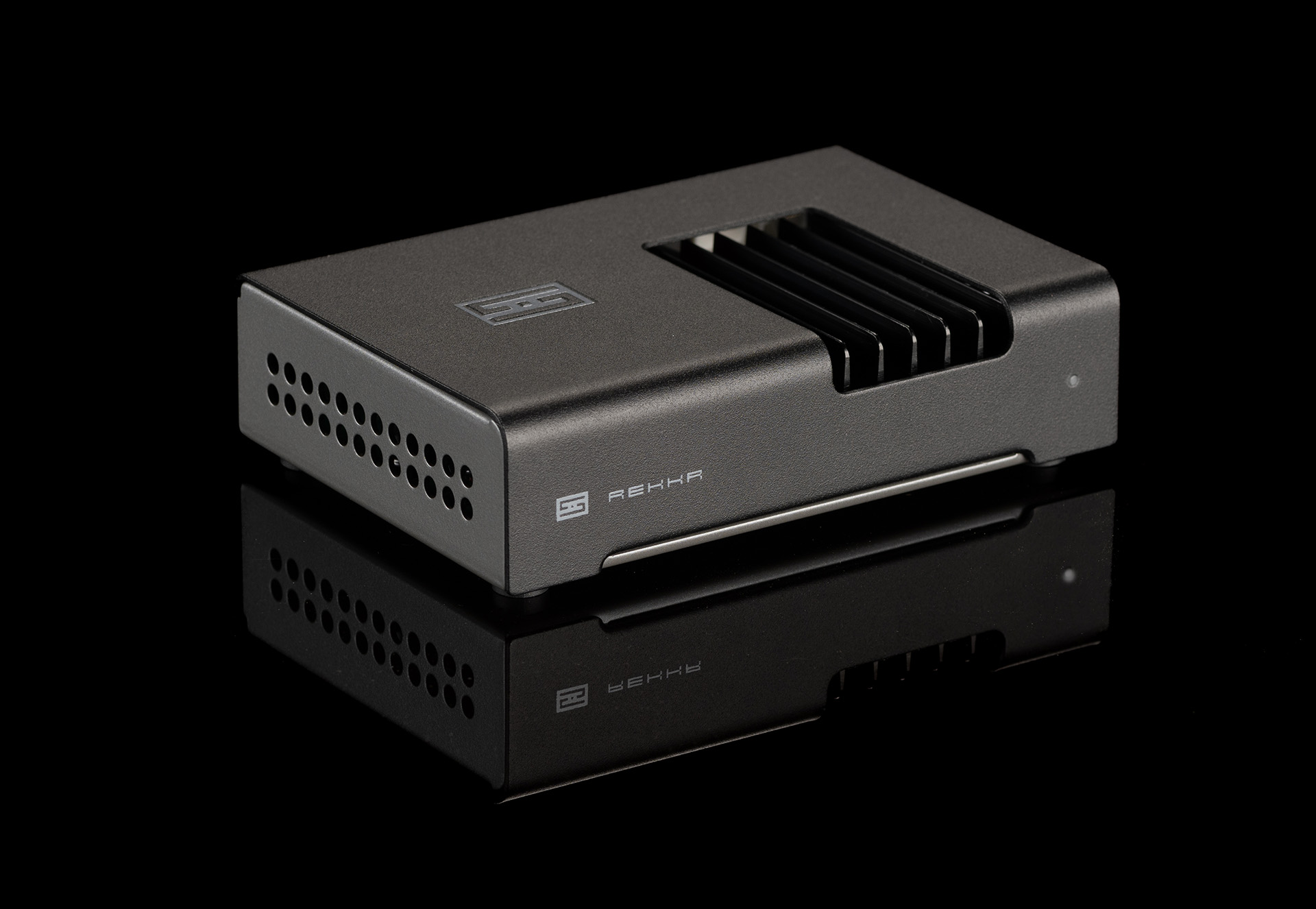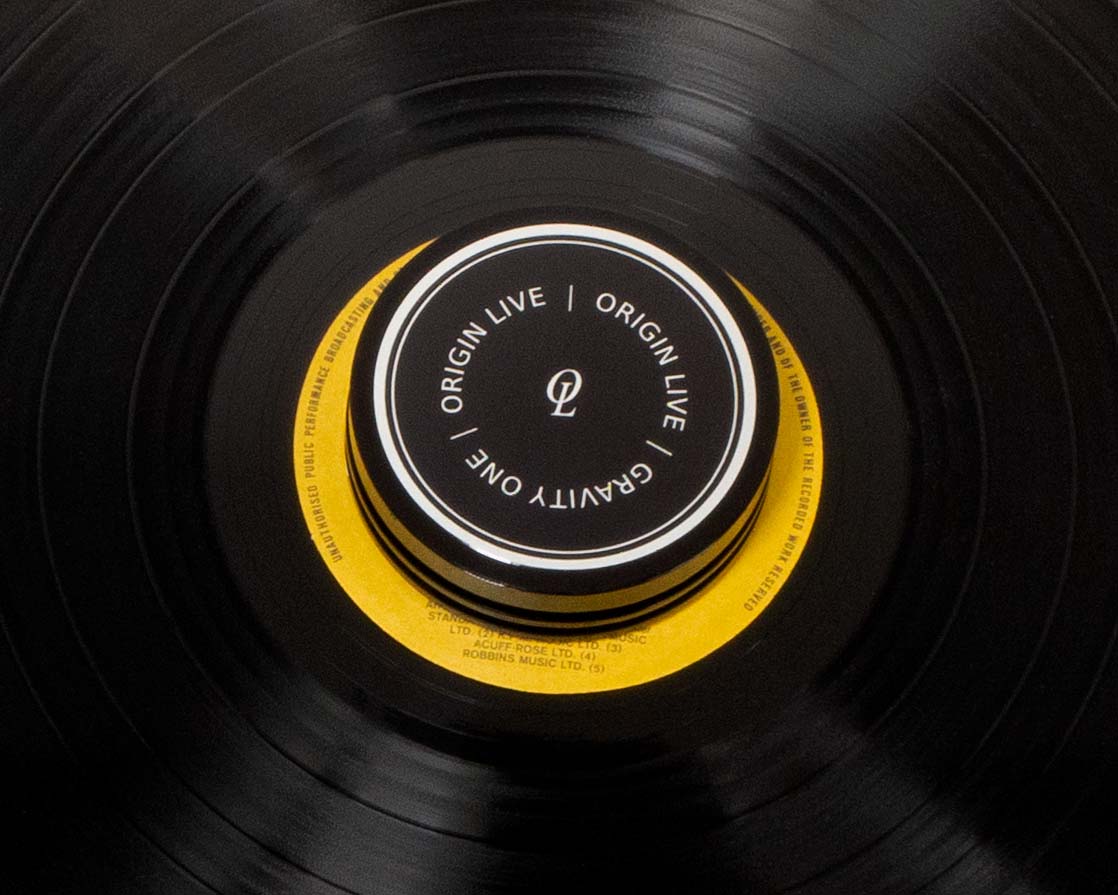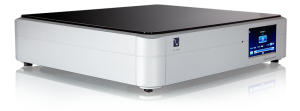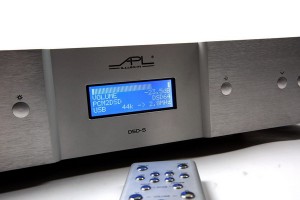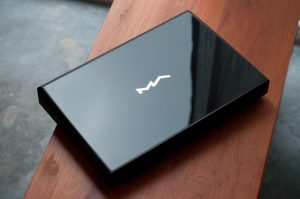Writing audio reviews is like a visiting a "nudie bar"—reviewers are exposed, so to speak, to things their significant others and financial planners would prefer they were not. At the end of the process, a reviewer may have been excited by the prospect of "new" and then has to either bundle back into their existing relationships or stumble through a potentially costly transition that may or may not be a long term improvement.
Early on in my adventure in parenthood, as the intersection of time and interest moved further away, my willingness to pay to improve the sound of my system drifted off, too. My family dynamic proved an effective prophylactic measure for the temptations of reviewing.
"Husbanding" my finances was easy to do, but dissipating lust for gear was not. In 2009 I looked into DIY and discovered the work of Lukasz Fikus, then but an online noodler rather than the current "King LampizatOr." I enjoyed his chronicled investigation into what made CD players sound good. He purchased used, well regarded and disregarded brands which were only sometimes functioning CD players to fix or tweak them. The purpose was to determine what made them tick and then what simple, cost effective "tweaks" could yield good sound—or so I recall in 2016. I, from the snobby lobby, thought I'd never dirty my system with a $20 CD player, but then again, I would not be listening to a tweaked player because... I haven't the electrical candle to follow Lukasz into the guts of a CD player to tweak it let alone diagnose and repair it.
I appreciated Lukasz' willingness to apply criticism not only to products he was working on but the results of his own efforts. I was emboldened by his indirect encouragement to build a DAC kit. I have used and enjoyed the Twisted Pear Audio Buffalo 32S DAC kit I bought uses ESS Technology's 9018 DAC chip since 2009. The computer output by S/PDIF through a hiFace USB converter to my Buffalo was indistinguishable from Ayre's original iteration of the QB9 USB DAC. In fairness to the Ayre, neither my DAC nor Ayre's were optimized. It's entirely possible that an optimized Ayre QB9 could have wiped the floor with my efforts... but it didn't.
LampizatOr Euforia DAC
What do you think a DAC named "Euforia" (Euphoria—a state of intense happiness or excited state of joy) that uses tubes to deliver the goods sounds like? I am poking the bear (you, dear reader) to elicit the sense that the Euforia probably sounds shamelessly rich and exciting which in turn might leave truth to find a euphonic exalted state. Know what I mean? I'll get to the sound in a bit.
The Euforia is Lukasz' lowest price DAC and happily not a kit. Most of LampizatOr's current notoriety, ironically, arises from Lukasz' priciest offerings. Editor of these pages, David Robinson is giving a look at LampizatOr's Golden Gate DAC, but at north of $15,000 it is unobtainium for most, myself included. Our Euforia here rings the till at +/- $2130, with shipping to the US.
LampizatOr's US importer says the Euforia represents the house sound of Lampizator, perhaps even more so than the Amber, an ESS 9018 chip DAC, whereas the Euforia is "chipless." User features are limited to USB input and single ended outputs. The Euforia box arrived from Poland in pristine condition with the Euforia appearing more upscale than Lukasz' origins suggest. Based on a visual comparison of online pictures, the Euforia seems a bit more finished than even the Lite 7, or early efforts of it.
Before We get Started
Buyer beware, before you send a signal to the Euforia, said signal needs to be sent as a DSD signal as it is a "DSD only" DAC. This means most of your music will need to be transcoded from PCM to DSD. Though the Euforia is LampizatOr's entry piece, its DSD engine is the same as LampizatOr's Level 4, Big 5, Lite 7, and Big 7 DACs." Thus, you'll be looking at some version of a computer to transcode your files and that means a relatively fast machine.
My home system uses a Mac Mini 1.4GHz i5 processor with 4GB of RAM. Transcoding PCM to DSD at 64x was a go, at 128x the sound hiccupped like a badly skipping LP. You'll want at least an i5 with 2.6GHz processing and hopefully a front side buss of 3.0GHz or more. Better still is an i7 processor with greater than 3.0GHz. RAM isn't nearly as important as CPU power. My Mac Mini, it turns out, is underpowered much as a two liter car full of people is not going to pull a trailer up a serious grade.
There are far more options available to transcode from PCM to DSD for Windows and even Linux than I was able to find for my Mac Mini. There may be more but I'm unaware of them. JRiver is an easy Apple solution, at about $70. For the money, you get a polished product that is nearly as easy to use as an "Apple" product. And as Mr. Fikasz notes, for the cost of a few CDs, DSD can be had. It sounded very good.
Fred Ainsley, one of the North American co-importers of LampizatOr, pointed me to HQPlayer. Jussi Laako (online as "Miska") is the Finnish guy behind HQPlayer (signalyst.com) which costs about $143 but does not have the finished user interface of JRiver. It is, however, a better sounding player than JRiver. There are numerous settings in HQPLayer that make audible differences though I don't have strong feelings on some if not most of the possible iterations. What HQPlayer lacks in user interface, it more than makes up in sound quality. Hard to imagine that a damned computer program makes a difference in musical playback, but clearly it does. Both JRiver and HQPlayer have thirty day trial periods so you should try them out together to compare to make your decision.
I see digital music moving out of its infancy, but it is not yet a fully mature form. For those that can afford to sample the more expensive wares, digital is maturing rapidly. I have college to pay for just yet, I am thus reluctant to spend Big Bucks on a DAC. The LP has long reached a stable position and so I've bellied up to the bar and bought a system that I think can last and has lasted for more than ten years.
Euphoria or Just Pretty Good?
Right out of the box the sound was... not good. The sound was grainy, like a picture through a screen door, kind of granularity. I was concerned that the trip from Poland had beaten all the happiness out of the Euforia. With a bit of time for tubes to settle and a few days of warm up, the granularity and screen door affect disappeared entirely, not to return. The initial sound in my system was a bit bright and glistened a bit too much for happiness, let alone euphoria.
Even so, the Euforia's first impressions were of music un-bottled from a playback chain, as in sounding less like a recording and more like music. The presentation, however, lacked some of the warmth and tactile texture my reference DAC has. What was present, however, was a sweetness, a clarity and quiet in the midrange through the treble that was... not a digital sound, it was a glimpse of real rather than recorded music.
Those Freakin' Cables
My wife was upset, "why isn't my printer printing... !" Dang, I had to return my wife's printer cable as I had no other USB cables in the house. Dave Clark lent me a few to try, unknown models from Furutech, Oyaide, and Purist Audio Design... all under $500 or so as well as a pricier prototype from Kubala-Sosna. They were close in sound and all were better than the HP printer cable I started with and which appears to have obscured texture. I had a slight preference for the Kubala-Sosna... was it because the rest of my system is connected with KS? Don't know.
But there were differences, like on Anna Moura's Leva-me Aos Fados the pitch of sibilance ranged from an "s" to a "c" as in the sounds of those letters. Slight? Yes, but a difference. All sounded at least good. The printer cable's sibilance seemed to be longer and sharper than the audiophile cables and so with disappointment I must say that even danged USB cables make a difference.
Disclaimer
I sold my E.A.R. 864 tube preamp two years ago. I've been listening through two very nice solid state designs, a YBA Alpha 1 (ca. 1995) and a GamuT D3 (ca 2005). Both are remarkable products, with the former being the slightly more resolving while also slightly more vivid in its musical color and timbre. But, in my system with powered .s I have a presentation which is less warm and relaxed sounding - it's very precise, highly resolving and balances closer to cerebral than romantic, though it's not overtly analytical, to me. The recording will make the difference.
This isn't the direction I wanted to go soundwise, it's just that solid state works better as a choice for a family that forgets to turn off tube amplifiers for days at a time. With the right recordings this system can sound beautiful, if a bit less often than it was with the similarly clear but slightly less resolving E.A.R.. This back story is here because it colors my impression of the Euforia.
Sound
OK, the Euforia in my system does not sound tubey. It is not romantic, its name notwithstanding, nor is it euphonic. If you're thinking rolled off highs, soft bass and a golden glow to the midrange - that's not the Euforia's sound. Fikus says he uses tubes because they are the simplest device available and thinks they do the least damage to the signal (I'm paraphrasing here). Tubes are not intended as tone controls. Fikus runs tubes at about twenty-five percent of "full power," so they perform at their most linear and with an eye to longevity.
I've heard "more musical" sounding CD Players/DACs (CEC TL51XR and E.A.R. Acute) though they added something, however difficult it was to both identify and articulate, let alone remember several years later. And, these were slightly more musical, if that's the case, they also lacked the Euforia's clarity. I've also heard more detailed CD Players/DACs (Ensemble Dichrono and Dirondo and Benchmark's DAC1), though more detail isn't necessarily... more life like. The Ensemble pair were nearly flawless, though they were closer to analytical than my current iteration and sounded more like excellent playback gear rather than music. Still high praise. While the Benchmark is free of obvious flaws, it is also free of soul, in my opinion. My reference Twisted Pear Audio Buffalo 32S DAC, by comparison is musical but sounds leaden, thick and suppressed compared to the Euforia. Dang.
After the Euforia settled in and I settled on the Kubala Sosna USB cable, my initial, and lasting sense was of the transparency to a live event. I mean by that the immediate, fast, finely detailed sound of musical instruments and voices experienced in person, rather than like a really good recording. This quality ran through much of what I heard, for better or worse. Ella Fitzgerald Sings the Cole Porter Songbook, a 1957 analog recording and a 1997 CD transfer, was surprisingly transparent. It was a rather stunning experience to hear such an old CD transfer sound so good.
I start with high praise but I am NOT saying that the Euforia is the best sounding digital I've heard. Perhaps the E.A.R. Acute (north of $6,000) was the "best sounding" digital I've had in my house, but it was not as transparent to music as the Euforia. The E.A.R. is a bit thicker and more harmonically "dense" sounding; music is drawn with a less fine pen, though more fully developed color (timbre) and performs with a bit more artistry. Which you choose will genuinely be a matter of which is balanced to your preferences/taste.
The sound of the Euforia and the two other LampizatOr DACs I've heard at shows neither sound digital nor analog. The sound really hews closer to a live event than to a particular recording format in its immediacy and the nakedness of the signal. (I'm avoiding clarity because that invites thinking the presentation is lean) The sound is rather fast, without being zippy. Timbre is well rendered if not as velvety rich as say my reference DAC.
I expect "live music" sounds like I'm saying perfect sound. I'm not. Keep in mind that live music, like your system, is affected by the room it's in. My family's living room, where I grew up listening to piano, Sousaphone, standup bass and accordion was well damped and warm sounding. Royce Hall at U.C.L.A. has a sharper, maybe brighter but definitely a more reverberant quality to it. "Live sounding" has more than one meaning and it isn't inherently warm, even if that is my default preference.
The Euforia strikes me as nearly between Royce Hall and my family's living room, with a nudge in the direction of the latter. I'm not going to perform a sonic autopsy and then bury you in a discussion of "bass was... midrange was..." because that would miss the essential character and distinct allure of the Euforia for me.
Some components have you listening to music with lots of bass or beautiful female vocals or... name a music fetish. Rather than bore us all with a description of the music I listened to, let me share the sort of experience Euforia provided. The Euforia reminded me of my initial time with the unfortunately named Dynavector XX2MkII in my system. With the Dynavector, I had a sense of getting to the musical message in a way that previous cartridges or system configurations obscured. After hearing the XX2 MkII I culled several dozen records from my system. Doesn't that sound like a criticism? It was, but of the music rather than the Dynavector.
A Digression on the Criticism
Though my family regularly had music in our house, what my dad introduced me to was not what ignited my flame of interest. While I liked and like it, it was my high school friends who introduced me to much of what I added that was mine. The music I ended up culling was music I'd bought because the friends who turned me on to Bowie, KISS (their first album), and Queen liked this other music. Queen's pop (Queen II and Sheer Heart Attack) I got immediately but I had to dislodge a lot of Lawrence Welk (hey, it was the 60s and my dad wasn't an adventurous listener), Shostokovitch and Glenn Miller to appreciate Bowie and KISS. In the process of working to grok Bowie, et al. I figured I needed to listen further to get this other music they liked but which did very little for me.
Well, turns out with the XX2MkII I realized why I hadn't "grokked" the music. There wasn't a hell of a lot going on. It wasn't innovative, intimate or really... interesting. This is the delightful case of breaking up with, "it's not me, it's YOU!" Die and leave the house, NOW! (oh, that's cathartic!) With the XX2MkII I felt I'd gotten what there was to get and I decided there was no need to keep that music in my house. I had a similar experience with the Euforia.
Moving Forward
The Euforia called for well recorded music with some emotional depth, though I felt it agnostic as to genre. While I can get the anthemic qualities Adele brings... she's a bit trite and doesn't require or even invite much investment in listening, I found 21 and 25 both a bit more of a hearing experience; with listening requiring more attention than hearing. Adele didn't reward that work. I found that less artistic "performers" also provided no invitation to listen in. I won't further this tangent because I don't think it's helpful.
What I do think would be helpful is to go to The Voice by Andreas Scholl, a German counter tenor (male equivalent of a female contralto/mezzo-soprano). With my Buffalo DAC, when I first heard the voice, without the singer's sex being identified - it was a good natured trick/test from a friend—there was something off about the voice that had me perplexed. The voice sounded female at first and then within a minute or so I unwound the "trick" of a male sounding like a female voice.
Having defrocked him as a sort of castrati with OEM parts, I left Scholl at the curb for several years until the Euforia arrived. I had no conscious plans for pulling out The Voice, but found Scholl in queue. This time enough of Scholl's performance was revealed, if you will, that I found his efforts artistic rather than mere chicanery. His voice was now more clearly male, more clearly from a larger chest cavity and greater vocal power without changing timbre and I marveled at the perceived strength/skill it took for him to achieve his pitch. While I am not a convert to this sacred music, so to speak, his efforts were revealed and the experience of his accomplishment was something I fairly, though not exuberantly, enjoyed.
I had a similar experience with other music as well. The more artistry on parade the more interest there was for me.
Not everything was fantastic with the Euforia. I would prefer a bit more warmth and perhaps a bit more color, perhaps because of the direction my system is leaning right now. My impressions are perhaps because the Euforia was "stuck" with performing in a less rich, less warm system balance. Without the warmth of my Buffalo DAC, I found the group "Live's" CD Secret Samadhi less compelling. This is a CD that is as close to the sound of a live rock recording as I've heard. The fullness my reference DAC provides made the frisson of live music seem present. A tad more system warmth, and I'd be in the driver's seat, alas such warmth was missing on this recording.
Some female recordings, like The Story's "So Much Mine" from Angel in the House lost a bit of the warmth that I like with my DAC, even though the Euforia sounded more "real." Other female vocalists who are pitched a bit highter, e.g. Kiri Ti Kanawa's rendering of "O Mio Babbino Caro" were beautiful. This rendering was perhaps the most realistic I've heard that track in my system. Victoria de los Angeles' recording of Heitor Villa Lobos' Bachianas Brasilieros No. 5 was beautiful, despite the poor recording quality bringing an extra dose of leanness. As you read this, you should know I'm trying to articulate what I heard so you can make your own decision about whether to listen and buy the Euforia. The criticisms here are to give you a window into what I heard and should not be construed as "failures" per se but might reflect my system balance.
Frankly, the Euforia deserves comparison to my vinyl replay system, more than my DAC reference. My analog setup is at least four times the cost of the Euforia. I found myself listening to a product that, whether it's the equal of my vinyl setup or not, makes me wonder whether vinyl is inherently superior. A friend and I were planning a trip to Amoeba Music, which would probably take a few hours of browsing time. Usually, I go to Amoeba to find vinyl with digital a secondary thought. Spontaneously, I wondered, does the medium matter? Well, probably the mastering will matter, but with the Euforia the gap is closing dramatically.
Concerns You Might Have
Something should be said about tubes. While tube failures are possible, random even, my experience with tubes over more than twenty years has been pretty darned good. I've never had less than five tubes running at a time, up until I sold my EAR 864 and for three years I had as many as fifteen tubes running. During my tube travels I had three tubes fail in that time. Designers don't need to stress tubes to get their desired performance these days. My take, yeah, tubes can randomly fail but it's not like a house of cards waiting to fail with the first slight breeze. Early iterations of the LampizatOr owners manual said no tube rolling or fuse swapping. Using care, you should be OK swapping tubes and fuses.
Wrapping Up
As I sit at the end of this trip to a nudie bar, er, gear review, I am confronted with whether to make a costly transition or to hold 'em. If I am going to undergo a transition, shouldn't the transition be to a product performance that lets me sit comfortably for five or six years? Should I be considering the Level 4 DAC from LampizatOr instead of their Euforia? Looking at the decision, I take myself back to sanity.
I don't listen often enough to spend what it takes to purchase a Level 4 DAC. I don't listen often enough that it even seems sensible to pay for the Euforia. Though the Euforia is clearly better than my Buffalo 32 DAC, my reference is still good and enjoyable.
And yet, euphoria, defined as an intense feeling of happiness, is transformative. This is a very special DAC. I find myself willing to deal with the upheaval that follows such a transition. I, apparently, will be learning about faster computers, streamers and USB cables as I have purchased the review sample. I am surprised and pleased to have this unit in my system. Should you consider it? Yes. There might be DACs with deeper, fuller bass or with a bit richer rendition of timbre or some other piece of the pie but it will likely be for a lot more money and I doubt you'll think of comparing that DAC to live music.
This Euforia delivers an intensely real experience of music at a very fair price.
PS - I expect to follow up my notes here with a chronicling of integrating my system into the world of the computer ancillaries needed to make the Euforia work its best.
P.P.S. Damn. Review nearly done and I found a tweak to my system that's changing my take on the Euforia. This review will be continued because I am too lazy to rewrite what I've written here.
Euforia
Retail: +/- $2130 depending on configuartion
LampizatOr
US Telephone (631) 813 8992




